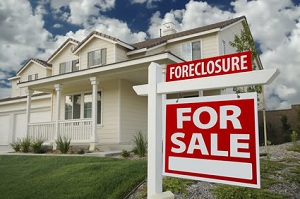The US economy has been struggling to recover from the financial crisis of 2008, as modest improvements in the labor market and consumer confidence have lifted hopes of an improvement in the economy, the housing market has remained stubbornly sluggish.
At the forefront of the housing issue in the US are the millions of Americans who are underwater on their homes – owing more than the home is worth – and who are left with few (or no) options for refinancing. These distressed borrowers all too often choose to walk away from their losing investment, opting for foreclosure in lieu of continuing to pay indefinitely, waiting for a market turn-around.
Further compounding the issue is the marked slowdown in the number of properties entering into the foreclosure process, down 32% year-to-date, as tighter regulations in the wake of the “robo-signing” scandal have slowed down the processing of foreclosure filings and could serve to prolong the housing recovery.
The industry is currently in the process of finishing settlement negotiations with the federal government and the US attorney generals, and until then, a considerable amount of foreclosure processing has slowed down or been put on hold entirely. It has been estimates that there are thousands of delinquent loans being held back from foreclosure while the industry strives to ensure that they meet the required standards.
More Properties In Foreclosure To Enter The Market In Coming Years
While there has been an inundation of foreclosed properties in the years since the financial crisis, there has been a noticeable lack of foreclosed properties available to buyers. This lack of foreclosed properties for buyers has been attributed to asset managers holding back foreclosed properties from the real estate market due to lack of demand in a soft market.
Foreclosed homes and properties that do manage to make it to the market are being quickly bought up by buyers who are willing and able to pay cash. Analysts warn that there will be many more properties coming in the years ahead, as there are approximately 4 million loans in serious delinquency that are expected to continue to be in the process of foreclosure for an additional three years.
The amount of shadow inventory is so large that analysts do not expect a turn around in the next year, and are even predicting an extended “new normal” of three to five more years. This slowdown of properties in foreclosure entering the real estate market has prevented a free-fall in housing prices, but could also prove to drag out an already painfully slow recovery process.
No Recovery In Labor Market, No Recovery In Housing
Compounding the housing issue is the reality that home prices could fall even further, but there could be no bottom in sight for housing prices if there is no improvement in the labor market. Some analysts and industry experts have estimated that housing rices could fall by as much as 3% between late 2011 and the first quarter of 2012.
There is also the added factor of the rise in short sales contributing to the foreclosure slowdown. As an increasingly growing number of banks are willing to agree to short sales, and the US federal government supplying funds for relocation, there has been an increase in troubled borrowers attempting to do a short sale, a process which necessitates that the borrowers to attempt a loan modification first.
Lenders have had little incentive to speed up the foreclosure process and disposal of bank-owned assets as the demand for housing has remained anemic. Currently, lenders have been attempting to control inventory, holding back foreclosed properties in order to avoid the effect an influx of foreclosed properties would have on housing prices. Banks are processing foreclosures only as fast as they can unload the properties that have been foreclosed on already.

Comments (No)